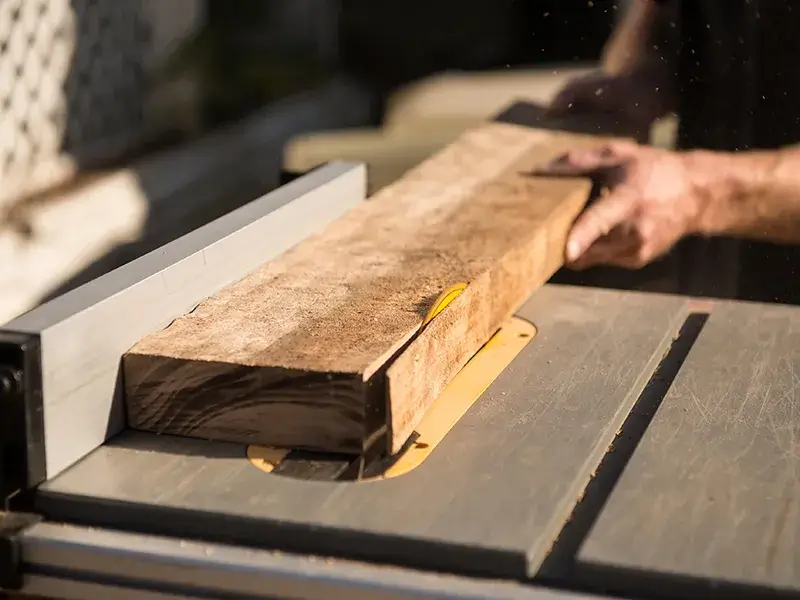A table saw is a versatile and powerful tool that can handle a variety of woodworking tasks. Whether you are making furniture, cabinets, or other projects, you may wonder what is the thickest wood you can cut on a table saw. The answer depends on several factors, such as the type of blade, the height of the blade, the speed of the blade, and the feed rate of the wood. In this article, we will explain these factors and give you some tips on how to cut thick wood on a table saw safely and efficiently.
The Maximum Cutting Depth of a Table Saw
The maximum cutting depth of a table saw is determined by the diameter of the blade and the height of the blade above the table. The larger the blade, the deeper the cut. The higher the blade, the deeper the cut. However, there is a limit to how high you can raise the blade, as it may expose too much of the blade and create a safety hazard. A general rule of thumb is to set the blade height so that it is about 1/4 inch higher than the thickness of the wood you are cutting.
The thickest wood you can cut on a table saw is usually equal to the radius of the blade. For example, if you are using a 10-inch blade, the maximum cutting depth is about 5 inches. If you are using a 12-inch blade, the maximum cutting depth is about 6 inches. However, this is not a hard and fast rule, as some blades may have different geometries and configurations that affect the cutting depth. Therefore, it is always a good idea to check the specifications of your blade and your table saw before attempting to cut thick wood.
How to Cut Thick Wood on a Table Saw
Cutting thick wood on a table saw requires some preparation and caution. Here are some steps and tips to follow:
- Choose the right blade. For cutting thick wood, you need a blade that has fewer teeth, larger gullets, and a lower hook angle. These features will help the blade cut through the wood faster and easier, and prevent clogging and overheating. A rip blade or a combination blade are good choices for cutting thick wood on a table saw.
- Adjust the blade height. As mentioned earlier, you should set the blade height so that it is slightly higher than the thickness of the wood you are cutting. This will ensure a smooth and clean cut, and reduce the risk of kickback and binding.
- Adjust the fence and the miter gauge. You need to align the fence and the miter gauge with the blade, and make sure they are parallel and square. This will ensure accurate and consistent cuts, and prevent the wood from drifting or twisting during the cut.
- Use a push stick or a push block. When cutting thick wood on a table saw, you need to keep your hands and fingers away from the blade. A push stick or a push block will help you feed the wood through the blade safely and smoothly, and maintain control over the wood. You can also use a featherboard or a hold-down device to keep the wood firmly against the fence and the table.
- Cut slowly and steadily. You need to feed the wood through the blade at a moderate and consistent speed. If you feed the wood too fast, you may overload the motor and cause the blade to bog down or burn the wood. If you feed the wood too slow, you may cause the blade to heat up and dull the blade. You should listen to the sound of the blade and the motor, and adjust the feed rate accordingly.
Conclusion
Cutting thick wood on a table saw is possible, but it requires some knowledge and skill. You need to know the maximum cutting depth of your table saw and your blade, and how to adjust the blade height, the fence, and the miter gauge. You also need to use the appropriate blade, and a push stick or a push block to feed the wood through the blade safely and smoothly. By following these steps and tips, you can cut thick wood on a table saw with ease and confidence.

